
The provinces of Sweden are historical, geographical and cultural regions. Sweden has 25 provinces and they have no administrative function, but remain historical legacies and the means of cultural identification. Dialects and folklore rather follows the provincial borders than the borders of the counties.
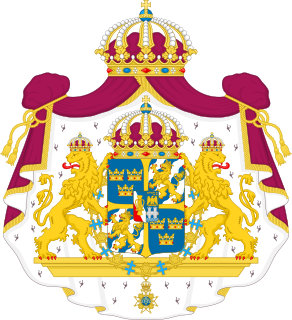
The counties of Sweden are the top-level geographic subdivisions of Sweden. Sweden is today divided into 21 counties; however, the numbers of counties has varied over time, due to territorial gains/losses and to divisions and/or mergers of existing counties. This level of administrative unit was first established in the 1634 Instrument of Government on Lord Chancellor Count Axel Oxenstierna's initiative, and superseded the historical provinces of Sweden in order to introduce a more efficient administration of the realm. At that time, they were what the translation of län into English literally means: fiefdoms. The county borders often follow the provincial borders, but the Crown often chose to make slight relocations to suit its purposes.

Svealand, Swealand or Sweden proper is the historical core region of Sweden. It is located in south central Sweden and is one of three historical lands of Sweden, bounded to the north by Norrland and to the south by Götaland. Deep forests, Tiveden, Tylöskog, and Kolmården, separated Svealand from Götaland. Historically, its inhabitants were called Svear, from which is derived the English Swedes.
Between 1634 and 2009, Finland was administered as several provinces. Finland had always been a unitary state: the provincial authorities were part of the central government's executive branch and the provinces had little autonomy. There were never any elected provincial parliaments in continental Finland. The system was initially created in 1634. Its makeup was changed drastically in 1997, when the number of the provinces was reduced from twelve to six. This effectively made them purely administrative units, as linguistic and cultural boundaries no longer followed the borders of the provinces. The provinces were eventually abolished at the end of 2009. Consequently, different ministries may subdivide their areal organization differently. Besides the former provinces, the municipalities of Finland form the fundamental subdivisions of the country. In current use are the regions of Finland, a smaller subdivision where some pre-1997 läänis are split into multiple regions. Åland islands retain their special autonomous status and their own regional parliament.

Satakunta is a historical province of Finland. It borders the historical provinces of Finland Proper, Tavastia and Ostrobothnia, also the Gulf of Bothnia.

Tavastia is a historical province in the south of Finland. It borders Finland Proper, Satakunta, Ostrobothnia, Savonia and Uusimaa.
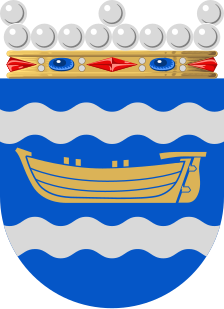
Uusimaa, is a historical province in the south of Finland. It borders Finland Proper, Tavastia, Savonia, and Karelia. The English translation would be "new land". From the Middle Ages to 1809, most of the present-day Finland was a part of Sweden. Uusimaa (Nyland) was thus included also among the historical Swedish provinces.

Ostrobothnia, Swedish: Österbotten, Finnish: Pohjanmaa is a historical province comprising a large western and northern part of modern Finland. It is bounded by Karelia, Savonia, Tavastia and Satakunda in the south, the Bothnian Sea, Bothnian Bay and Swedish Västerbotten in the west, Laponia in the north and Russia in the east.
Egentliga Finland (Varsinais-Suomi) is the name of a geographical region in Finland which can refer to:
Häme is the name of a geographical region in Finland, associated with the Tavastians, or Häme people (hämäläiset), a subgroup of the Finnish people. The precise area referred to can vary depending on the context.
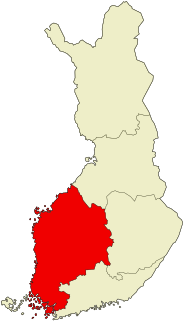
Western Finland was a province of Finland from 1997 to 2009. It bordered the provinces of Oulu, Eastern Finland and Southern Finland. It also bordered the Gulf of Bothnia towards Åland.
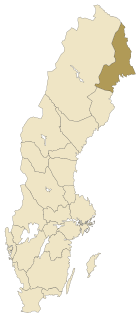
Norrbotten, known in English as North Bothnia, is a Swedish province (landskap) in northernmost Sweden. It borders south to Västerbotten, west to Swedish Lapland, and east to Finland.
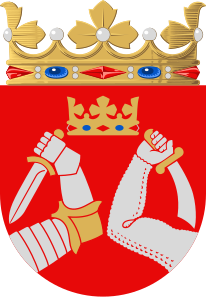
Karelia is an historical province of Finland which Finland partly ceded to Russia after the Winter War of 1939–40. The Finnish Karelians include the present-day inhabitants of North and South Karelia and the still-surviving evacuees from the ceded territories. Present-day Finnish Karelia has 315,000 inhabitants. The more than 400,000 evacuees from the ceded territories re-settled in various parts of Finland.

Sweden proper is a term used to distinguish those territories that were fully integrated into the Kingdom of Sweden, as opposed to the dominions and possessions of, or states in union with, Sweden.
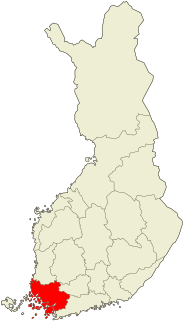
Southwest Finland or, officially, Varsinais-Suomi, also known as Finland Proper is a region in the south-west of Finland. It borders the regions of Satakunta, Tavastia Proper (Kanta-Häme), and Uusimaa. The region's capital and most populous city is Turku.

Tavastia Proper or, officially, Kanta-Häme is a region of Finland. It borders the regions of Southwest Finland (Varsinais-Suomi), Pirkanmaa, Päijänne Tavastia (Päijät-Häme), and Uusimaa.
The Great Famine of 1695–97, or simply the Great Famine, was a catastrophic famine that affected present Estonia, Finland, Latvia, Norway and Sweden: at the time, all of these areas belonged to the Swedish Empire with the exception of Norway. The areas which were worst affected were the Swedish province of Finland and Norrland in Sweden proper.
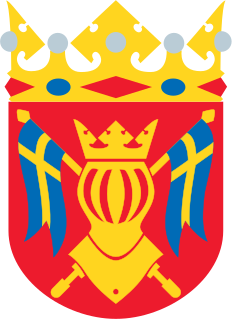
Finns proper are a historic people and a modern subgroup (heimo) of the Finnish people. They live in areas of the historical province of Finland Proper (Varsinais-Suomi) and speak Southwestern dialects of Finnish. Finns proper had very early strong connections to Scandinavia.













